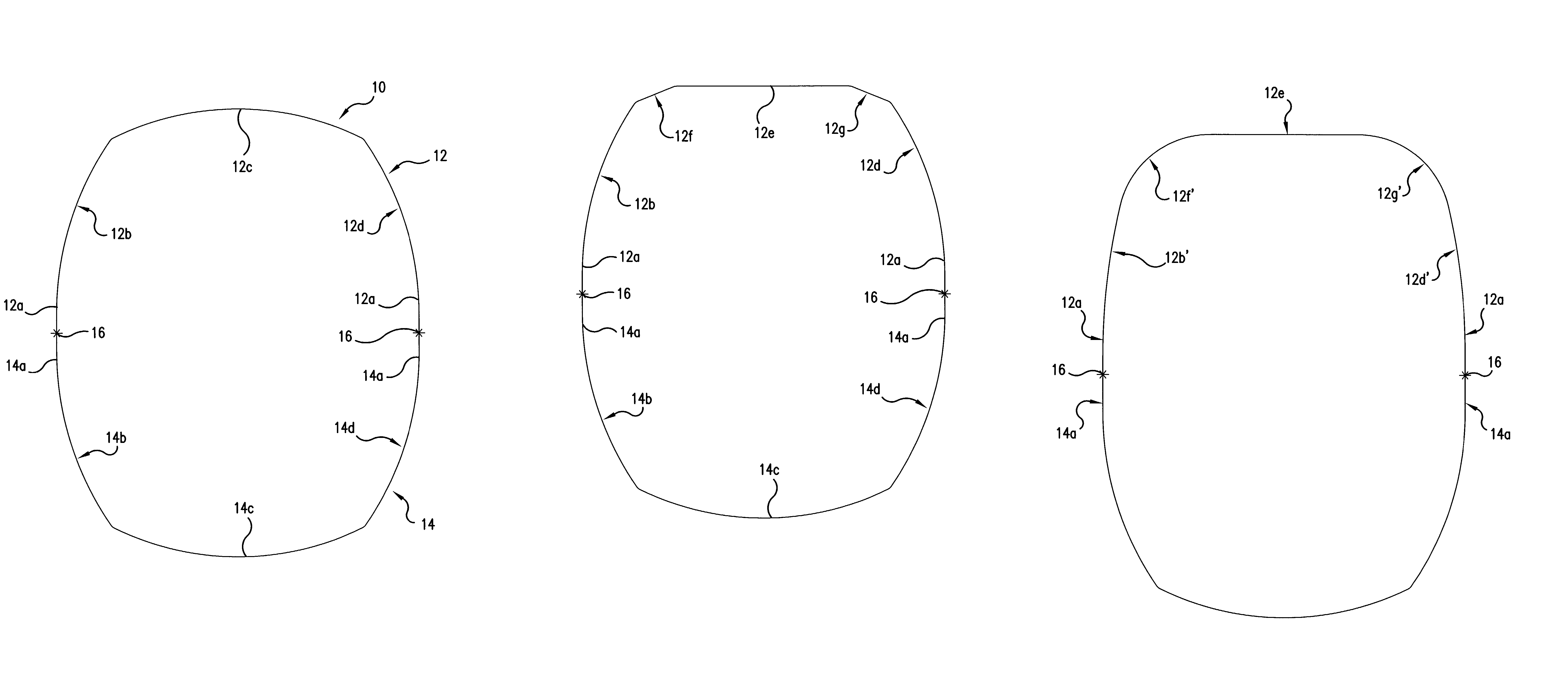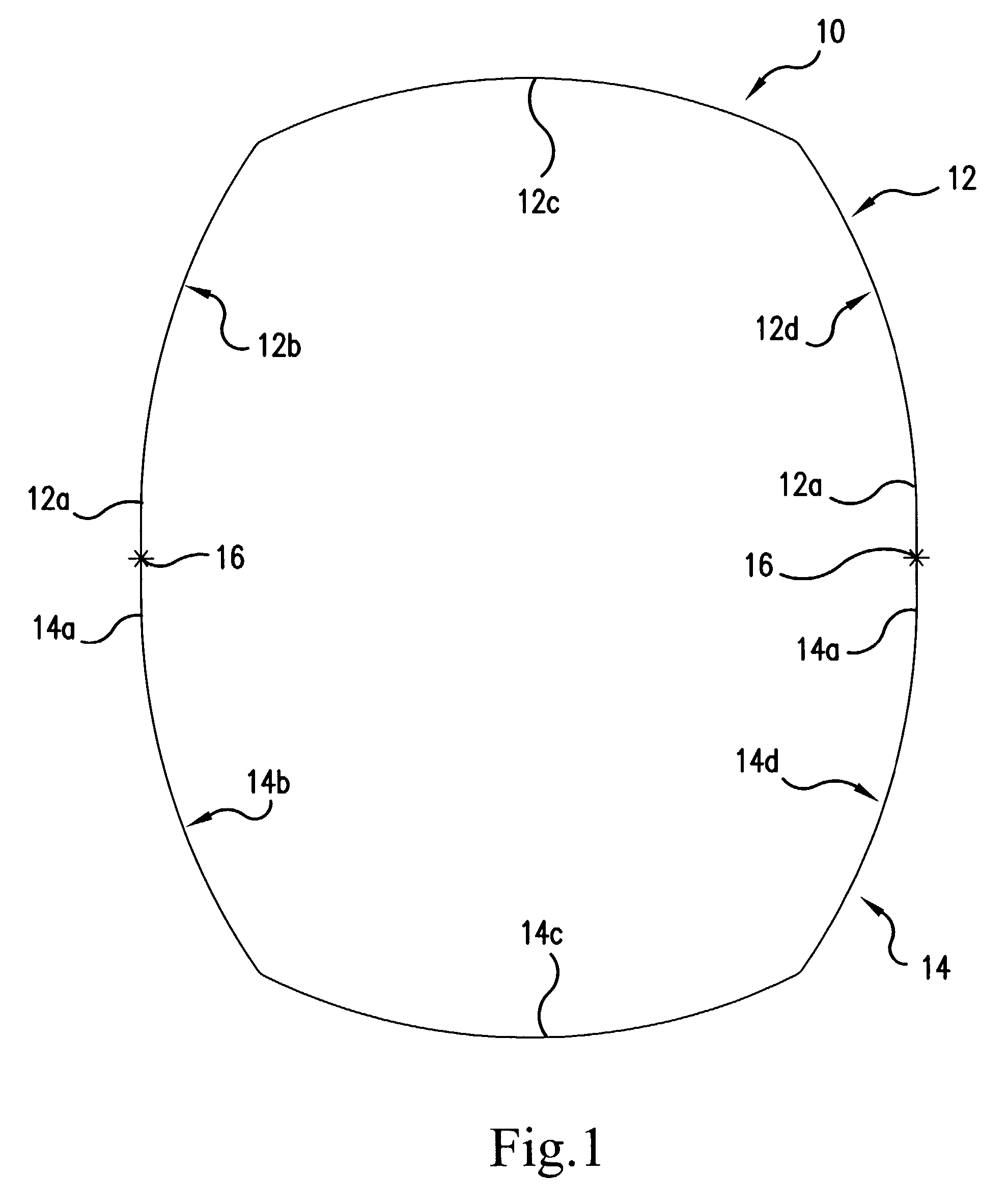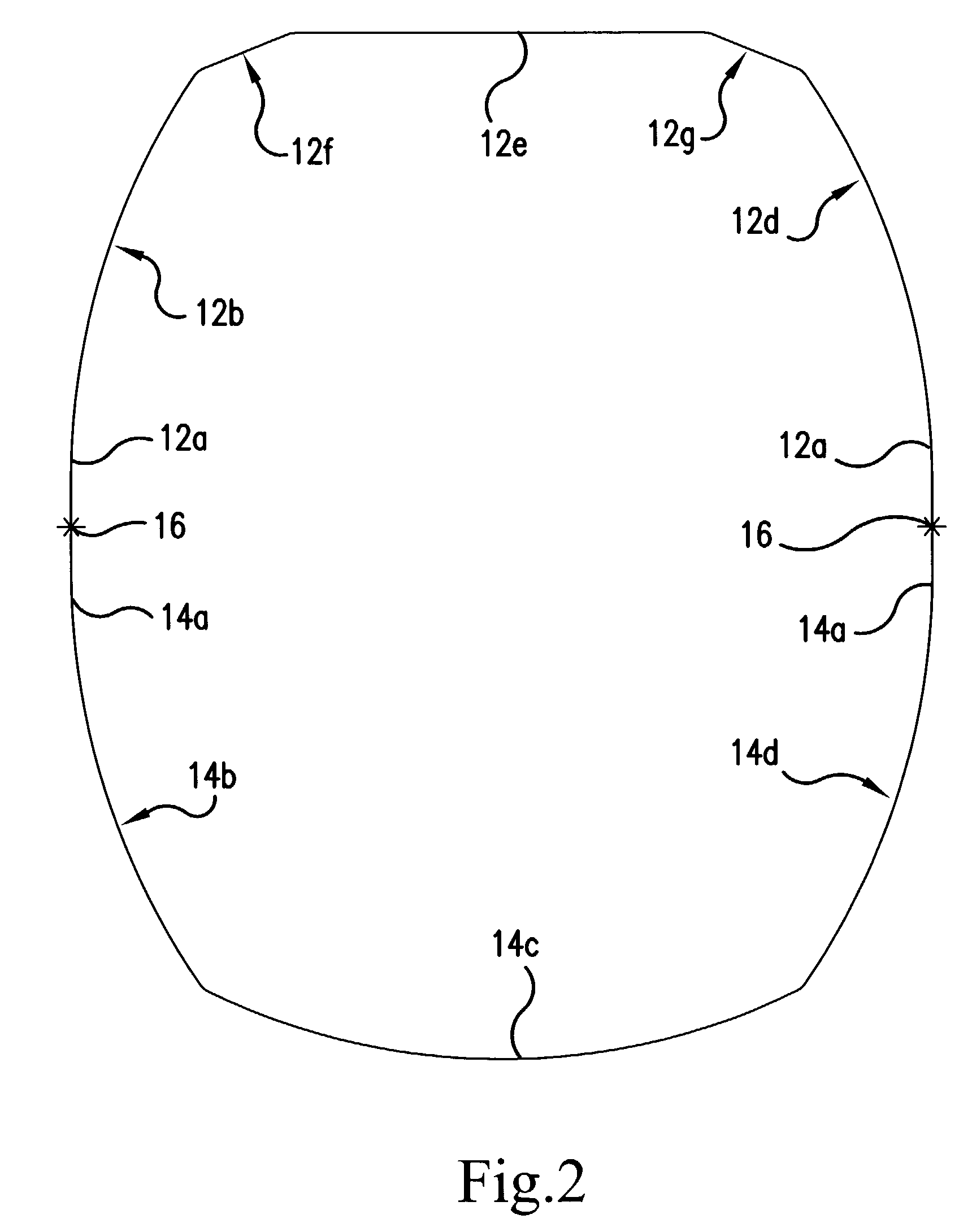Telescopic jib for a vehicular crane
a vehicular crane and telescopic technology, applied in the direction of buildings, buildings, constructions, etc., can solve the problems of increasing the overall weight of the jib, reducing the load bearing capacity of the jib, and not competing with the stiffness of rectangular trussed structures, etc., to achieve the effect of reducing the overall weight of the jib, and reducing the overall weight of the j
- Summary
- Abstract
- Description
- Claims
- Application Information
AI Technical Summary
Benefits of technology
Problems solved by technology
Method used
Image
Examples
first embodiment
[0025]a telescopic jib section is shown in FIG. 1, generally indicated by the reference numeral 10. FIG. 1 is a sectional view of the jib section along the main axis thereof. As noted above, this section may be either the base section of a jib or a telescopic section.
[0026]The jib section of FIG. 1 consists of an upper profile part 12 and a lower profile part 14. The free leg ends 12a and 14a of the two profile parts 12, 14 are straight and are welded to each other at their end portions. The respective welding joints are indicated by the reference numerals 16. Welds 16 are situated in the neutral zone of the jib section. As is apparent, the upper profile part 12 and the lower profile part 14 have about the same vertical height.
[0027]The lower profile part is formed by three outwardly curved shell segments 14b, 14c and 14d. Each section 14b, 14c and 14d has the shape of a circular arc, though with respectively different radii of curvature. Segments 14b and 14d each include one of the...
third embodiment
[0033]FIG. 3 illustrates in cross-sectional view the shape of a jib according to the present invention. Like the embodiment of FIG. 2, the embodiment of FIG. 3 includes a flat or straight segment 12e. Segment 12e is joined at its ends to outwardly curved shell segments 12g′ and 12f′ at the right and left upper corners of the upper profile part 12. Curved segments 12g′ and 12f′ have a relatively small radius of curvature. Segments 12g′ and 12f′ merge tangentially into the central straight shell segment 12e on one side and into the outwardly curved shell segments 12b′ and 12d′, respectively, on their other sides.
[0034]The outwardly curved segments of the jib provide excellent resistance to compressive forces. The relatively sharp “creases” formed at the joints where the curved segments meet at obtuse angles provide enhanced stiffness. This avoids any need for additional stiffeners, thus maintaining a desirably clean profile, desirably low overall weight and a compact nested jib struct...
PUM
 Login to View More
Login to View More Abstract
Description
Claims
Application Information
 Login to View More
Login to View More - R&D
- Intellectual Property
- Life Sciences
- Materials
- Tech Scout
- Unparalleled Data Quality
- Higher Quality Content
- 60% Fewer Hallucinations
Browse by: Latest US Patents, China's latest patents, Technical Efficacy Thesaurus, Application Domain, Technology Topic, Popular Technical Reports.
© 2025 PatSnap. All rights reserved.Legal|Privacy policy|Modern Slavery Act Transparency Statement|Sitemap|About US| Contact US: help@patsnap.com



